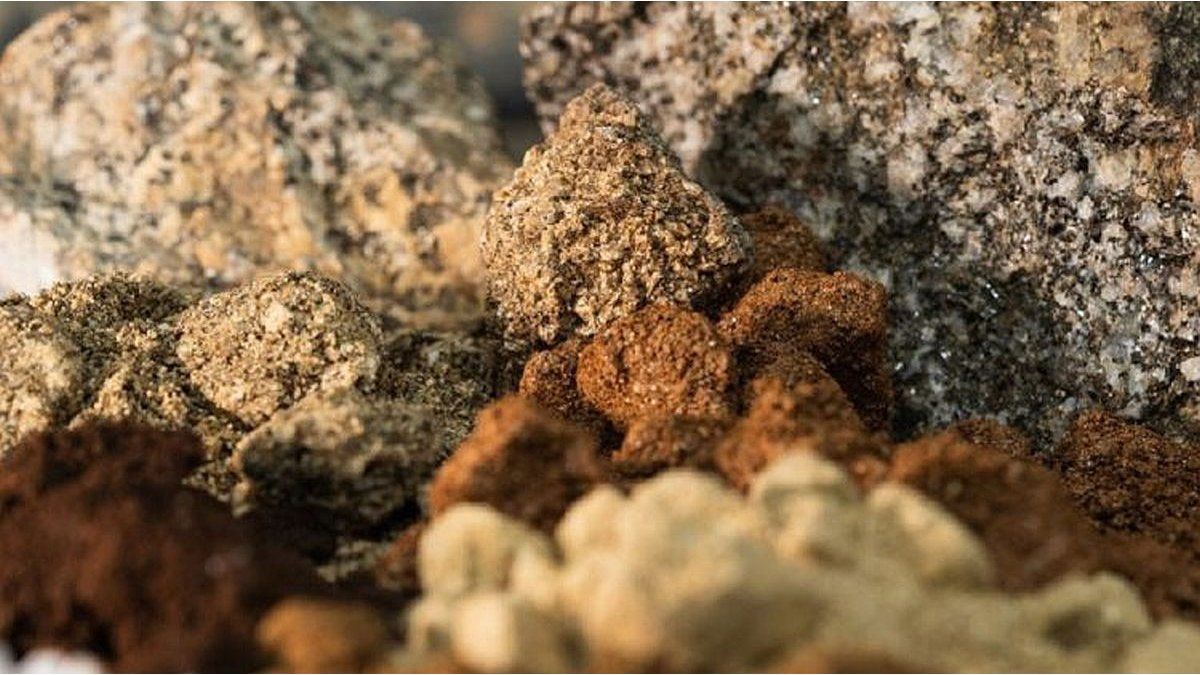Speculation linked to the limitation of the export of essential technologies for chip manufacturing by China became reality on December 21, 2023, when the Ministry of Commerce of the Asian country announced the suspension of exports of technologies necessary for the processing of rare earths (Forbes, 2023).
Currently, China produces 60% of the world’s rare earths, but processes almost 90% (Financial Times, 2023; IEA, 2024), therefore requiring importing resources from other countries. This has given China a near monopoly (Baskaran, 2024).
In fact, around 98% of rare earths used in the European Union during 2021 were imported from China. The Asian giant has strategically developed this monopoly in the rare earths market since the 1990s (BBC, 2023).
However, there are significant global reserves of rare earths outside China, including 19% in Vietnam, 18% in Brazil, 6% in India and 4% in Australia, equivalent to almost half of the world’s supply ( Baskaran, 2024).
RARE EARTHS.jpg
According to the graph, the comparative advantage that the BRICS group has is significant if we look at the cumulative advantage that China, Brazil, Russia and India have together, located within the first 5 positions in the ranking of rare earth reserves in 2022.
The geopolitics of critical materials
Rare earths have become a geopolitical tool within the framework of the so-called Fourth Industrial Revolution or Industry 4.0, since these are crucial elements for technological development, for national security and even for the advancement of disruptive technologies such as artificial intelligence.
Neodymium is known for its high coercivity and magnetic remanence, allowing it to generate intense and stable magnetic fields, making it essential for missile guidance systems. Lanthanum improves the clarity of glass, particularly for high-end camera lenses, such as those used for intelligence, surveillance and reconnaissance. Europium, for its part, heats the tones of LED lights, plasma screens and is used for different types of laser beams; while its unique neutron absorption properties make it a crucial ingredient in control rods used in nuclear reactors (Russel Kenlan, 2020).
Broadly speaking, it seems that China uses these materials as a pressure tool within the framework of the commercial and technological war it maintains with the United States, whose main ally to obtain these materials is Australia. This already happened in 2010, when China restricted exports of rare earths to Japan due to a territorial dispute, and in 2019 when it used it as a political weapon in its trade war with the United States (BBC, 2023).
It is worth remembering that on September 30, 2020, then-President Donald J. Trump declared that US dependence on China for rare earth elements was a national emergency and issued an executive order demanding a multi-agency review and immediate action to provide loan guarantees and subsidies that help stimulate domestic supply. American mining companies, and possibly some foreign-owned competitors, were eligible to receive such funds.
At that time, Trump ordered environmental restrictions to be relaxed to further encourage domestic mining. Despite their critical nature, the United States depends on China for 80% of its rare earth metal consumption (BBC, 2019).
In addition to rare earth metals, China also provides more than half of annual US consumption: 31 of 35 materials considered critical to national security, according to the US Department of the Interior and the US Department of Commerce in 2017 (Ikenson, 2020).
LANDS TWO.jpg

According to the order for national security and critical industries of the United States, this country’s dependence on China for gallium, graphite and barite, among other materials, “constitutes an unusual and extraordinary threat.” That is why, as the semiconductor or microchip war intensifies, both countries and their allies carry out new maneuvers.
At the beginning of August 2023, China announced restrictions on the export of gallium and germanium – key metals for the manufacture of semiconductors – or graphite, arguing that these decisions were made for reasons of “national security” (Liang and Marsh, 2023 ). Both elements are used in the production of chips and also have military uses.
In response, in early January 2024, the Netherlands joined the United States and Japan to limit exports of advanced chip manufacturing equipment with the aim of preventing China from continuing to advance in this sector considered strategic; punctually through the Dutch company ASML Holding (Advanced Semiconductor Materials Lithography) dedicated to the manufacture of cutting-edge advanced lithography machines intended for such developments (El Observador, 2024).
The constant “give and take” between the world’s two largest economies has raised concerns about so-called “resource nationalism,” when governments hoard critical materials to exert pressure on other countries (Liang and Marsh, 2023). This concern concerns above all the West.
Furthermore, experts warn that the use of resources and technological capabilities as weapons – in the way that the United States and China have done – has direct global environmental consequences. This is because so-called green technologies depend on these types of materials.
It is worth asking: will the conflicts between the United States and China intensify over the appropriation of these minerals? What other impacts will these conflicts have?
Paradoxical dependencies of predatory capitalism
A person consulted on the street can hardly identify scandium or gadolinium. Perhaps I cannot measure in strict terms the reason for the importance that coltan has acquired and the atrocities that are occurring in its name in the Democratic Republic of the Congo, after becoming the “new black gold” (Hernández, 2024; Caciabue and Giménez, 2024).
For most people, what concerns them is whether they have access to a smartphone or a computer to carry out their work tasks; the cost of your car; or what the transition towards green technologies will represent in economic matters, especially from the expansion of digitalization after the Pandemic and the configuration of a new digital phase (Aguilera, 2023).
Those who have no doubts and identify the fundamental role of these critical materials are the representatives of the great strategic projects, the New global Financial and Technological Aristocracy that seeks to gain margins of action in the digital and technological field and that has control over sophisticated technological developments and industrial.
The excessive dependence and the consequent search for these materials constitutes a permanent concern for predatory capitalism, since they are valuable treasures, highly coveted for the corporate ambitions of the financial and technological sector.
Hence the importance of closely observing the development of these trends and the growing extractivism of this type of elements, especially with regard to mining expansion in territories of the Global South, where Latin America and Africa would be playing a crucial role.
[*] Vargas has a Master’s degree in Social Sciences with a focus on Education (FLACSO). Specialist in Education and New Technologies (FLACSO). Graduate in Psychopedagogy (UNRC). Diploma in Strategic Anticipation and Risk Management (UNDEF). Doctoral candidate in Development Studies at the Academic Unit in Development Studies (UAED) of the Autonomous University of Zacatecas (UAZ) and CONACYT Scholarship holder, Mexico. Researcher of the Analysis Program of the Construction of Meaning in Digital Platforms (PAC) of the Institute of Culture and Communication (ICC) of the National University of Lanús (UNLa). Networks: @Betiana_Vargas_
[*] Silvestris is a Telecommunications Engineer, Master in Engineering Sciences (UNRC) and Diploma in Strategic Anticipation and Risk Management (UNDEF). Director of the Energy, Science and Technology Observatory (OECYT) associated with the People and Science platform. Networks: @asilvestris_arg
Source: Ambito
David William is a talented author who has made a name for himself in the world of writing. He is a professional author who writes on a wide range of topics, from general interest to opinion news. David is currently working as a writer at 24 hours worlds where he brings his unique perspective and in-depth research to his articles, making them both informative and engaging.




